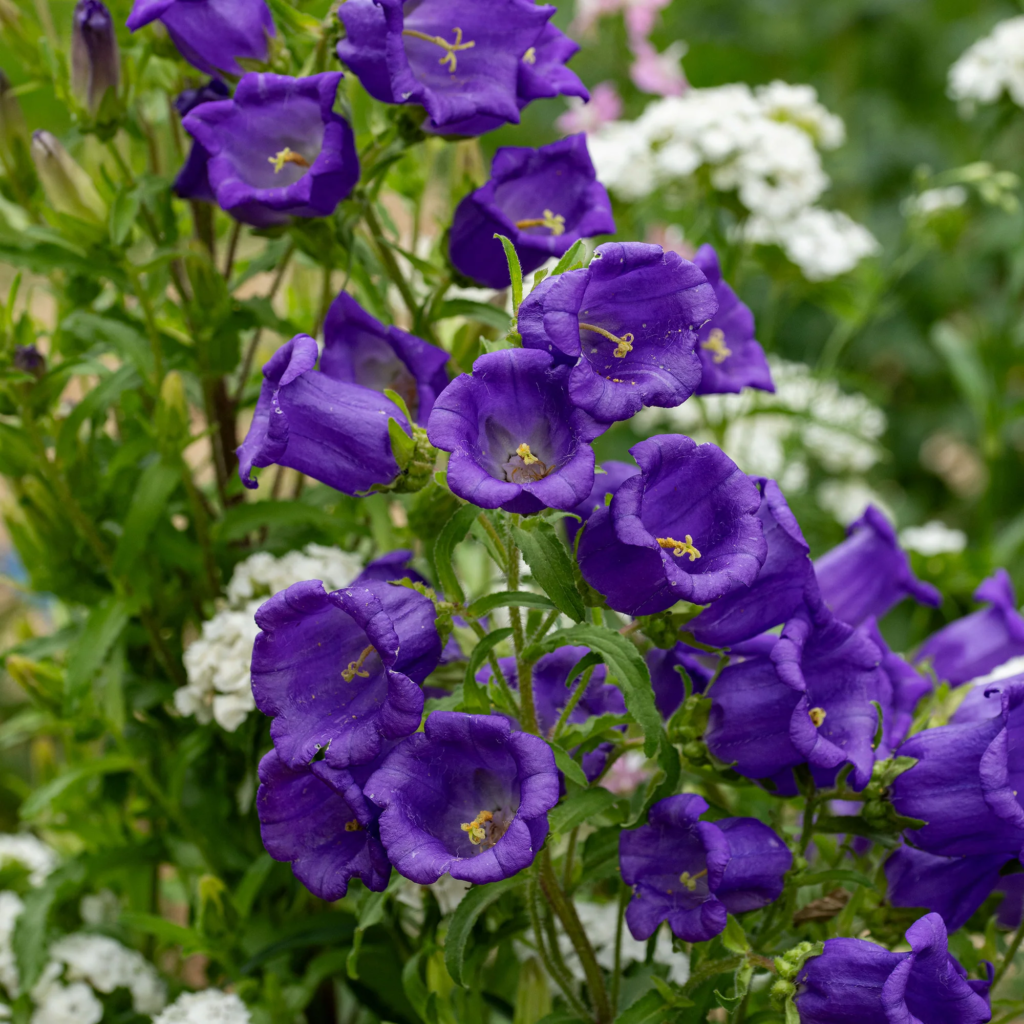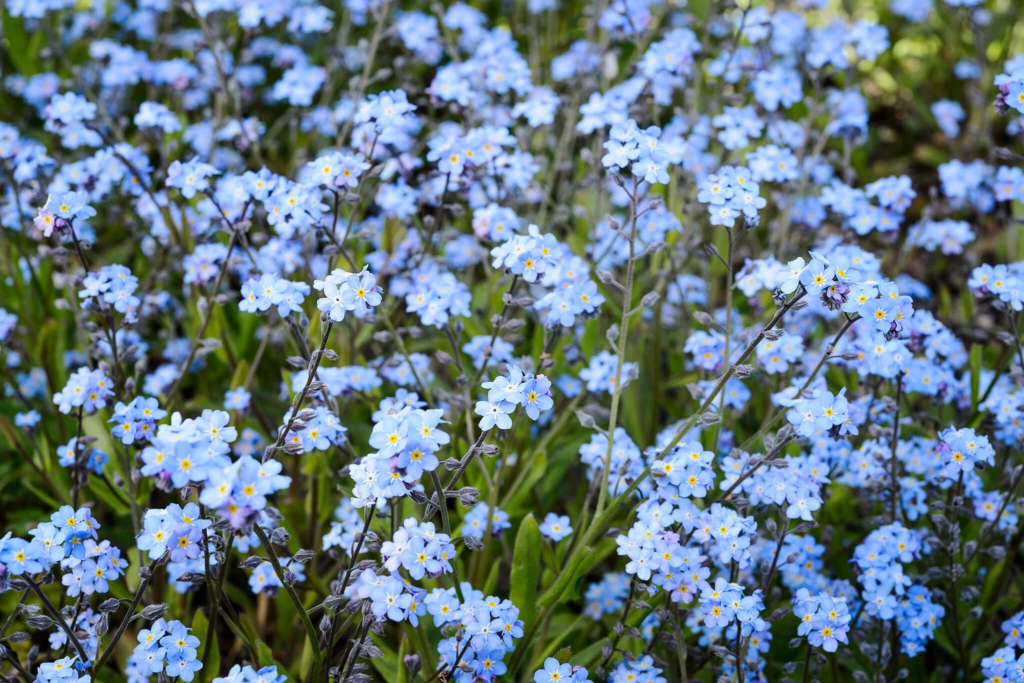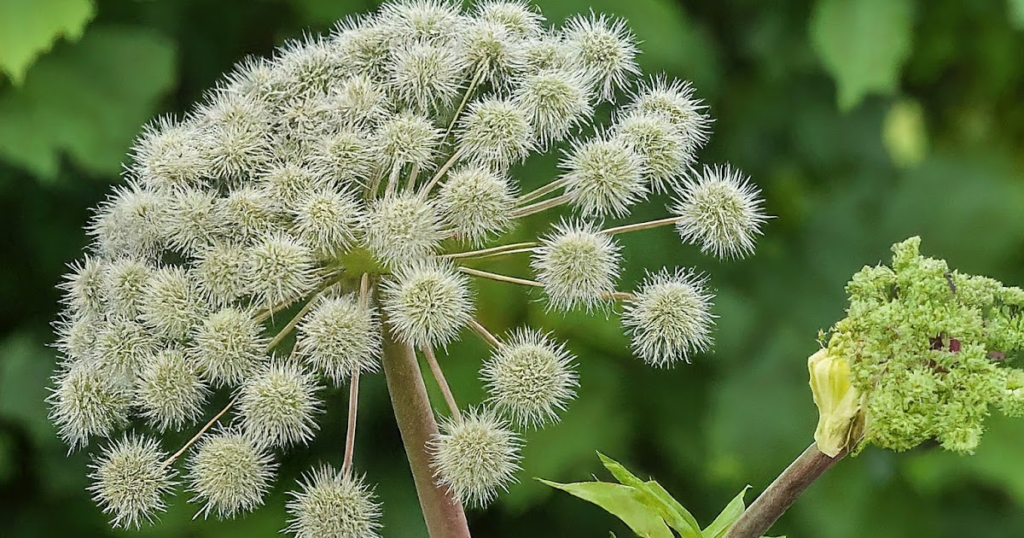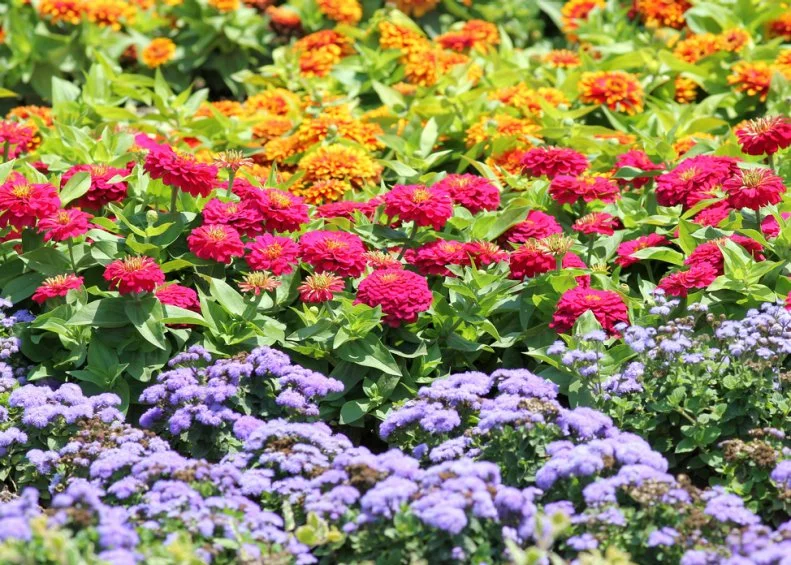Looking to add stunning blooms to your garden without planting every year? You’ll love exploring the best biennial flowers to grow. These charming plants offer a unique growing cycle: they focus on leafy growth in the first year, then burst into colorful flowers in the second—rewarding your patience with spectacular displays.
For gardeners across the USA, biennials are a smart choice. They’re low-maintenance, budget-friendly, and often self-seed to return for years to come. Whether you’re in a warmer southern zone or braving northern winters, there’s a biennial flower that will thrive in your region.
In this article, we’ve gathered 13 of the most beautiful and dependable biennial flowers for American gardens. You’ll get detailed growing tips, ideal zones, bloom times, and care instructions tailored to help your garden flourish. By the end, you’ll know exactly which varieties to plant and how to make them thrive.
Ready to transform your outdoor space with color and charm? Let’s dive into the best biennial flowers to grow this year!
What Are Biennial Flowers?
Biennial plants complete their life cycle over two years. In year one, they grow leaves and roots. In year two, they flower, produce seeds, and then die.
Why are biennial plants worth growing?
- Stunning blooms in year two
- Attract pollinators like bees & butterflies
- Low maintenance in year one
- Perfect for long-term garden planning
13 Best Biennial Flowers to Grow (USA Zones 4–9)
1. Foxglove (Digitalis purpurea)
Best Biennial Flower for Vertical Impact in Your Garden

- USDA Zones: 4–9
- Light Needs: Partial shade to full sun
- Soil Needs: Moist, well-draining, rich in organic matter
- Bloom Time: Late spring to early summer (Year 2)
- Height: 2–5 feet
- Companion Plants: Ferns, hostas, columbine
Foxglove is one of the best biennial flowers to grow, known for its stunning, vertical flower spikes. These tall, spiky blooms in shades of purple, pink, and white add drama to garden beds. Foxglove thrives in partial shade, making it an excellent choice for gardens with limited sunlight.
Care Tips:
Plant seeds in late spring, and expect lush foliage in year one. By the second year, the plant will shoot up flower spikes that attract bees and hummingbirds. Foxglove requires moist, well-drained soil, and regular watering, especially in hot summer months. Remove spent flowers after blooming to encourage reseeding.
Pro Tip: If you want to keep your foxglove coming back year after year, let some of the flowers go to seed!
2. Sweet William (Dianthus barbatus)
Compact and Colorful Biennial Flower for Borders

- USDA Zones: 3–9
- Light Needs: Full sun
- Soil Needs: Loamy, slightly alkaline, well-draining
- Bloom Time: Late spring to early summer
- Height: 12–24 inches
- Companion Plants: Snapdragons, pansies, violas
Sweet William is a compact, fragrant biennial flower that adds vibrant color to your garden. It comes in shades of pink, red, and white, making it perfect for creating colorful garden borders or mixed flower beds. Its compact size makes it suitable for containers as well.
Care Tips:
Sweet William prefers well-drained soil and full sun. Plant seeds in late spring for blooming the following summer. Regularly remove dead flowers to encourage new growth and prolong the blooming period. Sweet William is relatively low-maintenance and perfect for beginner gardeners looking to add a pop of color.
Pro Tip: Sweet William is also deer-resistant, making it an excellent choice for gardens in areas with wildlife.
3. Hollyhock (Alcea rosea)
Towering Blooms that Add Height and Elegance

- USDA Zones: 3–9
- Light Needs: Full sun
- Soil Needs: Rich, well-draining
- Bloom Time: Mid to late summer
- Height: 6–8 feet
- Companion Plants: Delphinium, daylily, sunflowers
If you’re looking for a biennial flower that makes a statement, look no further than the hollyhock. These tall plants are perfect for adding vertical height to the back of garden beds or near fences. Their large, colorful blooms come in a range of hues, from soft pastels to deep reds and purples.
Care Tips:
Plant hollyhocks in rich, well-draining soil with plenty of sunlight. To prevent the plant from falling over, consider staking the stems as they grow. Hollyhocks are prone to rust, so spacing them well and ensuring good air circulation is essential. Deadhead spent flowers to encourage continuous blooming.
Pro Tip: Hollyhocks are fantastic at attracting pollinators, making them ideal for eco-friendly gardens.
4. Canterbury Bells (Campanula medium)
Charming Bell-Shaped Blooms for a Classic Cottage Garden

- USDA Zones: 5–8
- Light Needs: Full sun to partial shade
- Soil Needs: Fertile, well-drained soil
- Bloom Time: Early to mid-summer
- Height: 2–3 feet
- Companion Plants: Foxglove, daisies, rudbeckia
Canterbury Bells are a beloved flower for cottage-style gardens. Their beautiful bell-shaped blooms in shades of blue, purple, and white bring charm and elegance to any space. These flowers are ideal for those who want to add a touch of old-fashioned beauty with minimal effort.
Care Tips:
Plant Canterbury Bells in fertile, well-drained soil, and water regularly to ensure healthy growth. These flowers prefer full sun but will also thrive in partial shade. To encourage multiple blooms, cut back the plants after the first bloom. They make excellent cut flowers for indoor arrangements.
Pro Tip: Canterbury Bells are known to reseed in the garden, so they’ll come back year after year if you let them.
5. Black-Eyed Susan (Rudbeckia hirta)
A Stunning Summer Bloomer for Low-Maintenance Gardens

- USDA Zones: 3–9
- Light Needs: Full sun
- Soil Needs: Dry to medium moisture, well-drained
- Bloom Time: Summer to fall
- Height: 1–3 feet
- Companion Plants: Coneflower, coreopsis, ornamental grasses
Black-Eyed Susan is a bold, easy-to-grow biennial flower that flourishes in full sun and is perfect for adding a pop of color to your garden. With its striking yellow petals and dark brown centers, it’s a favorite of both gardeners and pollinators. These flowers are excellent for wildflower gardens and natural landscapes.
Care Tips:
Plant Black-Eyed Susans in well-draining, sandy soil. They tolerate drought once established, but regular watering will help them grow stronger. Deadhead spent blooms to prolong the flowering period, and divide plants every couple of years to maintain vigor.
Pro Tip: Black-Eyed Susans attract butterflies and bees, making them a great addition to any pollinator-friendly garden.
6. Forget-Me-Nots (Myosotis sylvatica)
Delicate Blooms for Shaded Areas and Woodland Gardens

- USDA Zones: 3–8
- Light Needs: Partial shade to full sun
- Soil Needs: Moist, well-drained
- Bloom Time: Early to mid-spring
- Height: 6–12 inches
- Companion Plants: Ferns, hostas, bleeding heart
Forget-Me-Nots are sweet, low-growing biennial flowers known for their sky-blue blooms. They’re perfect for shaded garden beds or woodland areas. These flowers bring a delicate beauty to the spring garden and are often used in borders or as ground cover.
Care Tips:
Forget-Me-Nots require consistent moisture, so keep the soil damp but not soggy. They’re also ideal for naturalizing, as they readily self-seed. To avoid overcrowding, thin seedlings in early spring. Forget-Me-Nots can be grown as annuals in some climates, but they perform best as biennials.
Pro Tip: Allow your Forget-Me-Nots to self-seed for a natural, long-lasting display that will return year after year.
7. Poppy (Papaver spp.)
Bright, Bold Blooms that Will Light Up Your Garden

- USDA Zones: 3–9
- Light Needs: Full sun
- Soil Needs: Light, sandy, well-draining
- Bloom Time: Late spring to early summer
- Height: 1–3 feet
- Companion Plants: Cornflowers, bachelor’s buttons
Poppies are the ultimate biennial flower for bold, colorful blooms. Their delicate petals come in a variety of colors, including red, orange, and pink. Poppies are great for creating eye-catching garden displays or adding a whimsical touch to flower beds.
Care Tips:
Poppies thrive in full sun and need well-draining soil, ideally sandy or rocky. They can be direct-sown outdoors, and they do best with minimal care. Avoid transplanting poppies, as they don’t like their roots disturbed. Water regularly, but don’t let them sit in soggy soil.
Pro Tip: Poppies are relatively short-lived but will reseed themselves in the garden, so you’ll have blooms again next season.
8. Lunaria (Money Plant, Lunaria annua)
A Beautiful Biennial with Unique Seed Pods

- USDA Zones: 4–8
- Light Needs: Full sun to partial shade
- Soil Needs: Moist but well-drained
- Bloom Time: Mid-spring
- Height: 2–3 feet
- Companion Plants: Poppies, foxglove, honesty
Lunaria, also known as Money Plant or Honesty, is valued for both its flowers and its striking seed pods. The silver-dollar-like pods add a unique element to your garden and are often used in dried flower arrangements.
Care Tips:
Lunaria thrives in moist, well-drained soil and enjoys both full sun and partial shade. Once it has flowered, leave the plants to self-seed. The pods will dry out and retain their unique shape, which can be harvested for floral crafts or left in the garden for winter interest.
Pro Tip: The dried seed pods of Lunaria are incredibly popular for craft projects, so you can harvest them to make wreaths or centerpieces.
9. Evening Primrose (Oenothera biennis)
A Stunning Nighttime Bloom for Your Garden

- USDA Zones: 4–9
- Light Needs: Full sun
- Soil Needs: Well-draining, sandy or loamy
- Bloom Time: Summer to fall
- Height: 3–5 feet
- Companion Plants: Bee balm, echinacea
Evening Primrose is a night-blooming biennial that releases its sweet fragrance as the sun sets. It’s perfect for adding interest to your garden at dusk, and the pale yellow flowers are sure to stand out.
Care Tips:
Plant Evening Primrose in well-drained, sandy soil and ensure it gets full sun for the best growth. This plant is drought-tolerant once established, but consistent watering during dry spells will help it thrive. The flowers are most active in the evening, making them a unique addition to moon gardens.
Pro Tip: Evening Primrose is an excellent plant for attracting night pollinators like moths.
10. Mullein (Verbascum thapsus)
Low-Maintenance Biennial with Tall Flower Spikes

- USDA Zones: 3–9
- Light Needs: Full sun
- Soil Needs: Poor, dry, rocky soils are fine
- Bloom Time: Midsummer
- Height: Up to 6 feet
- Companion Plants: Yarrow, lavender, Russian sage
Mullein is known for its tall, spiky flower stalks and soft, fuzzy leaves. It’s a low-maintenance plant that grows well in poor soil conditions, making it perfect for xeriscaping and drought-prone gardens.
Care Tips:
Mullein prefers dry, well-drained soil and full sun. Water sparingly once established. It’s an excellent plant for attracting pollinators, but it’s also resistant to most pests. Mullein is easy to grow from seed, though it may take time to establish itself.
Pro Tip: Use Mullein’s tall flower spikes to add height and structure to your garden design.
11. Teasel (Dipsacus fullonum)
A Bold Biennial with Architectural Appeal

- USDA Zones: 4–9
- Light Needs: Full sun to partial shade
- Soil Needs: Well-drained, moist
- Bloom Time: Summer to fall
- Height: 4–6 feet
- Companion Plants: Yarrow, black-eyed Susan, cone flowers
Teasel is a striking biennial flower known for its unique spiny seed heads that provide architectural interest in the garden. The tall, thistle-like plants produce small, tubular flowers that bloom in the second year. This plant is often grown for its seed heads, which are favored by wildlife, especially finches.
Care Tips:
Teasel prefers well-drained, moist soil and a sunny or partially shaded location. While it tolerates a variety of soil types, it thrives in rich, loamy conditions. Once the plant finishes flowering, leave the seed heads intact to attract birds. Teasel may self-seed if allowed, so be mindful of where you plant it to avoid spreading.
Pro Tip: Teasel makes an excellent cut flower and its seed heads can be used in dried flower arrangements. They are also great for wildlife gardens.
12. Honesty (Lunaria annua)
A Beautiful Biennial with Unique Seed Pods

- USDA Zones: 4–8
- Light Needs: Full sun to partial shade
- Soil Needs: Moist, well-drained
- Bloom Time: Mid-spring
- Height: 2–3 feet
- Companion Plants: Poppies, forget-me-nots, columbine
Honesty (also known as Lunaria annua) is a unique biennial prized for its glowing seed pods. The plant features purple or white flowers in its first year, followed by the characteristic translucent seed pods that resemble silver coins. These pods are popular in dried arrangements and add visual interest in both gardens and vases.
Care Tips:
Honesty prefers moist, well-drained soil and partial shade to full sun. It is a low-maintenance plant, but it benefits from being deadheaded to prevent it from becoming too leggy. Once it starts to flower, allow the seed pods to mature and dry naturally. You can collect these pods for crafting and arrangements.
Pro Tip: Honesty self-seeds, and it often grows in a naturalizing pattern, making it perfect for informal or woodland gardens.
13. Angelica (Angelica archangelica)

A Tall and Graceful Biennial for Herb and Medicinal Gardens
- USDA Zones: 4–7
- Light Needs: Full sun to partial shade
- Soil Needs: Moist, well-drained, rich in organic matter
- Bloom Time: Summer
- Height: 4–8 feet
- Companion Plants: Echinacea, bee balm, lemon balm
Angelica is a dramatic biennial plant that adds height and elegance to gardens. Its tall stalks topped with clusters of greenish-white flowers make it a standout in both herb gardens and ornamental plantings. Angelica is often used in traditional medicine and cooking, making it a popular choice for gardeners interested in herbal or medicinal plants.
Care Tips:
Angelica thrives in moist, well-drained soil enriched with organic matter. It prefers partial shade but can also tolerate full sun, particularly in cooler climates. Angelica can grow quite tall, so provide ample space for it to spread. After flowering, the plant can die back, but it will often reseed itself.
Pro Tip: Angelica’s flowers attract beneficial insects like bees and butterflies. You can also harvest its stems and roots for medicinal uses or add them to teas and flavorings.
Beginner Tips for Growing Biennial Flowers in the USA
If you’re new to gardening, biennial flowers offer a perfect way to start. These plants require minimal maintenance compared to annuals, as they grow for two years before flowering. Here are some easy-to-follow tips for growing biennials in your garden:
- Planting Schedule:
In the first year, biennial flowers focus on vegetative growth. In the second year, they will bloom. Make sure to plant seeds in late summer to early fall so that they have enough time to establish roots before winter. By spring or early summer, you’ll be rewarded with beautiful flowers. - Watering Needs:
Biennials require consistent moisture, especially in their first year. Keep the soil evenly moist but not waterlogged. Once established, many biennials are drought-tolerant and require less frequent watering. - Soil Preparation:
Most biennials prefer well-draining soil. Before planting, amend the soil with compost or organic matter to improve fertility and drainage. This is especially important for flowers like foxglove and hollyhocks. - Deadheading:
To keep your biennials looking neat and to encourage more blooms, make sure to deadhead spent flowers throughout the growing season. This will also prevent your plants from wasting energy on producing seeds, giving more strength to the next set of flowers.
Why Biennials Are a Great Choice for U.S. Gardens
Biennial flowers offer a unique set of benefits that make them ideal for gardeners across the USA. Here are a few reasons why you should consider planting biennials in your garden:
- Low Maintenance: Biennials grow slowly in the first year and bloom in the second, making them less demanding than annuals.
- Cost-Effective: You only need to plant biennial flowers once every two years, saving you time and money on replanting.
- Pollinator-Friendly: Most biennials attract bees, butterflies, and hummingbirds, helping to support local ecosystems.
- Long-Lasting: Many biennials reseed themselves, providing beautiful blooms year after year.
Tips for Growing Biennial Flowers Successfully
- Choose a sunny location (most biennials prefer full sun).
- Use well-draining soil rich in compost.
- Mulch in winter to protect roots.
- Deadhead blooms in year two to extend flowering time.
- Leave some seed heads to encourage natural reseeding.
FAQs About Biennial Flowers
Q1: Can biennial flowers bloom in their first year?
A: Rarely. Most only produce foliage in year one. Some may bloom if started early indoors.
Q2: Do biennial plants come back every year?
A: Not exactly. They die after year two but can reseed and act like perennials.
Q3: What’s the difference between biennials and perennials?
A: Perennials come back year after year. Biennials bloom only in their second year and then die.
Q4: Are biennial flowers good for pollinators?
A: Yes! Many biennials, like foxglove and hollyhock, are pollinator magnets.
Conclusion
Choosing the best biennial flowers to grow can transform your garden into a stunning display of color, texture, and fragrance. With the right care, these flowers will thrive for years to come, offering low-maintenance beauty while benefiting pollinators and wildlife. Whether you’re planting foxglove for vertical interest, poppies for bold color, or forget-me-nots for delicate charm, there’s a biennial flower for every garden.
Get started today by selecting the perfect biennials for your climate and garden style. Happy gardening!



